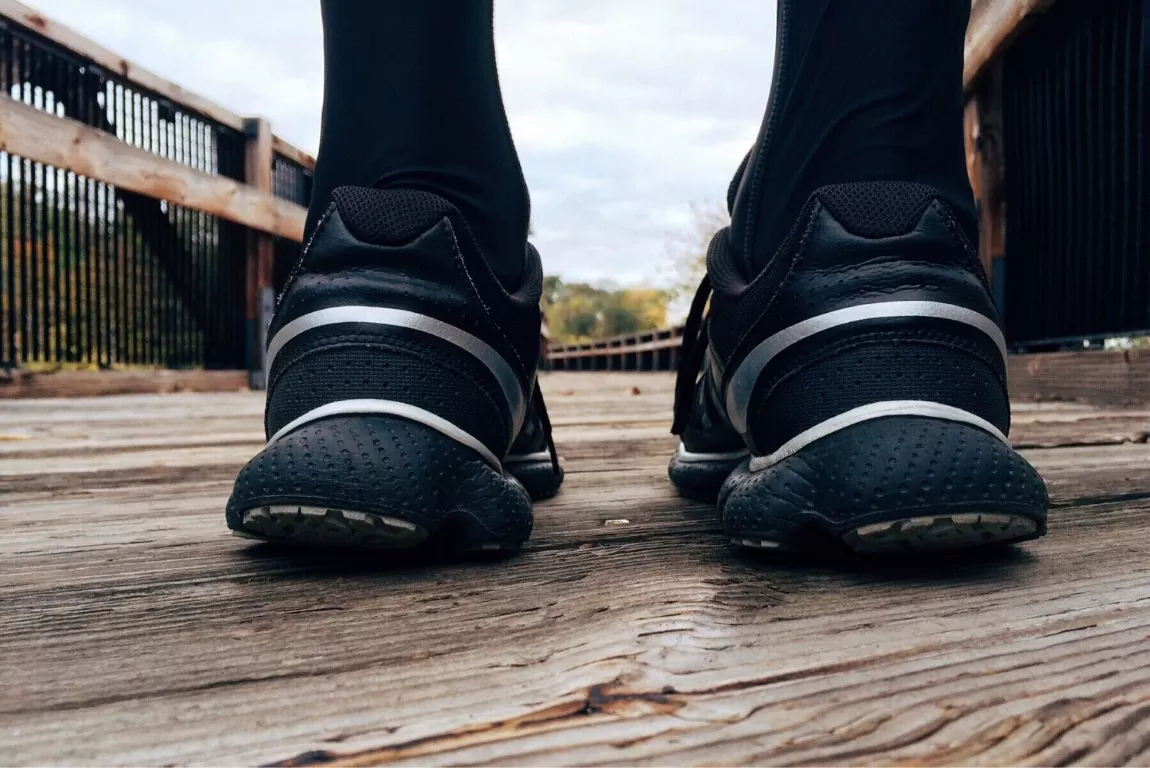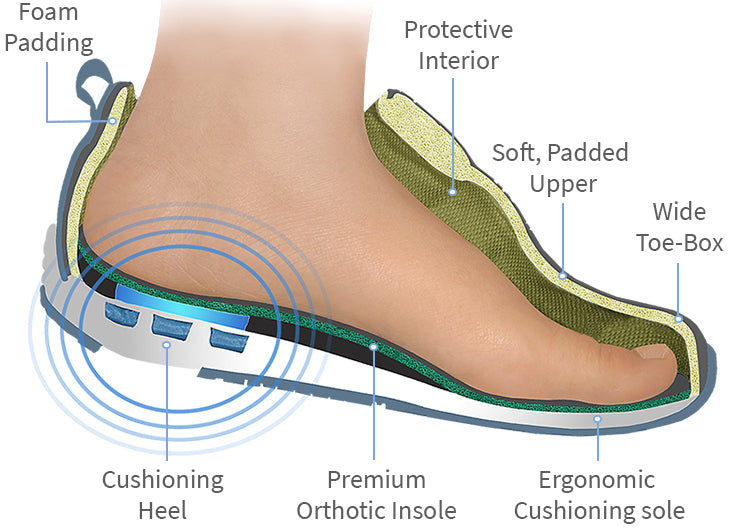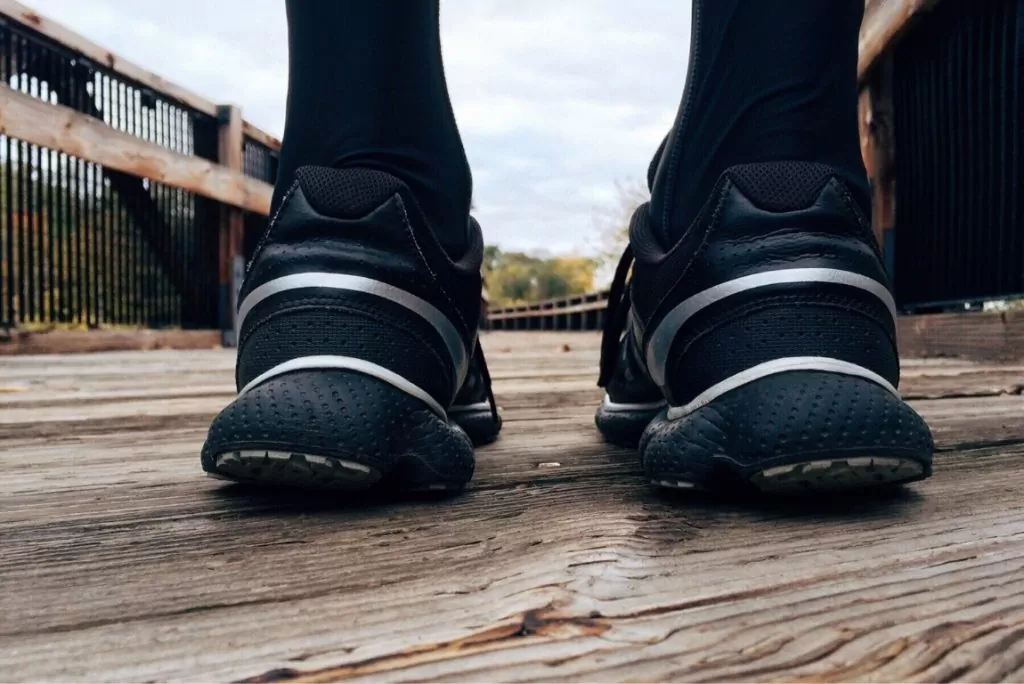For Achilles tendonitis, opt for shoes with good cushioning and arch support to reduce strain on your tendon and promote proper alignment. Such shoes can provide relief and comfort while allowing for proper healing.
Finding the best shoes for Achilles tendonitis can make a significant difference in managing the condition and preventing further injuries. Proper footwear should offer cushioning to absorb shock and reduce pressure on the Achilles tendon. Additionally, look for shoes with a supportive arch to help distribute weight evenly and maintain proper foot alignment.
By choosing the right shoes, you can alleviate discomfort, support your foot’s natural mechanics, and aid in the recovery process.
What Is Achilles Tendonitis?
Achilles tendonitis is a common overuse injury that affects the Achilles tendon, the large tendon that runs down the back of the lower leg. The condition is characterized by inflammation and pain in the Achilles tendon, which can make walking and other activities uncomfortable. Understanding the causes and symptoms of Achilles tendonitis is crucial for finding the best shoes to provide support and alleviate discomfort.
Causes Of Achilles Tendonitis
The primary causes of Achilles tendonitis include overuse, sudden increase in physical activity, inadequate footwear, tight calf muscles, and improper running or walking techniques.
Symptoms Of Achilles Tendonitis
The symptoms of Achilles tendonitis often include pain and stiffness in the tendon, swelling along the back of the heel, difficulty walking, and tenderness or warmth around the affected area.

Credit: www.clickphysiotherapy.com.au
Importance Of Choosing The Right Shoes
Impact of shoes on Achilles Tendonitis:
Wearing unsuitable shoes can worsen your Achilles Tendonitis condition.
Properly selected shoes can provide the necessary support and cushioning.
Suitable shoes can help alleviate pain and prevent further injury.
Benefits of wearing suitable shoes:
- Proper alignment: Shoes with good arch support can help align your feet correctly.
- Shock absorption: Cushioned shoes can reduce impact on the Achilles tendon.
- Stability: Shoes with a firm heel counter can provide stability for your foot.
- Comfort: Choosing well-fitted shoes can prevent discomfort and pain.
Features To Look For In Shoes For Achilles Tendonitis
When choosing shoes for Achilles Tendonitis, it’s important to look for features like good arch support, cushioning, and a heel counter for stability.
Cushioning And Support
Cushioning should be ample to absorb shock and reduce pressure on the Achilles tendon. Support is crucial to stabilize the foot and avoid excessive strain.Heel Height And Drop
Opt for lower heel height and drop to minimize stress on the Achilles tendon. A moderate heel height with a gradual drop is ideal for proper alignment.Toe Box Width And Flexibility
Wide toe box allows natural toe splay, reducing pressure on the front of the foot. Flexibility aids in smooth, natural foot movement to prevent strain. In choosing shoes for Achilles Tendonitis, consider cushioning and support, heel height, and toe box width. A well-designed shoe can alleviate discomfort and aid in the healing process.Types Of Shoes Recommended For Achilles Tendonitis
For Achilles Tendonitis, choose shoes with good cushioning and arch support. Look for options with a slightly elevated heel to reduce stress on the tendon. Flexible and lightweight designs also help with comfort and mobility. It’s important to choose shoes that provide stability and minimize pressure on the Achilles tendon.
The right shoes can make all the difference in managing and preventing Achilles Tendonitis. Whether you are a runner, an avid walker, or simply on your feet all day, selecting the right footwear is crucial. Let’s take a look at the types of shoes recommended for Achilles Tendonitis. “`htmlRunning Shoes For Achilles Tendonitis
“` When it comes to running shoes for Achilles Tendonitis, it’s important to look for options with ample cushioning and good arch support. A well-cushioned heel collar and a flexible sole are also key features to consider. The goal is to minimize stress on the Achilles tendon while providing stability and shock absorption. “`htmlWalking Shoes For Achilles Tendonitis
“` For those who enjoy walking, choosing the right footwear can alleviate discomfort associated with Achilles Tendonitis. Look for walking shoes with a supportive and cushioned midsole, as well as good arch support. The shoes should also provide ample shock absorption and a snug, supportive fit to reduce strain on the Achilles tendon. “`htmlOrthopedic Shoes For Achilles Tendonitis
“` Orthopedic shoes are designed to provide exceptional support and comfort for various foot conditions, including Achilles Tendonitis. These specialized shoes often feature a supportive footbed, extra cushioning, and a deep heel cup to reduce pressure on the Achilles tendon. Additionally, orthopedic shoes are available in a variety of styles, from athletic to casual, ensuring there is an option for every occasion. Selecting the right shoes tailored to your specific needs and activities can aid in alleviating the symptoms of Achilles Tendonitis and promote a more comfortable, pain-free experience.Additional Tips For Managing Achilles Tendonitis
Discover expert tips for managing Achilles Tendonitis effectively by choosing the best shoes designed for optimal support and comfort. Prioritize footwear with cushioned soles and proper arch support to alleviate pain and promote healing. Incorporating these shoe recommendations into your daily routine can help alleviate discomfort associated with Achilles Tendonitis.
Achilles tendonitis can be a frustrating and painful condition that affects the back of your lower leg. While selecting the right shoes is crucial, there are additional tips you can incorporate into your routine to manage and alleviate the symptoms. By incorporating stretching and strengthening exercises, using supportive inserts or orthotics, and seeking medical advice, you can improve your condition and get back on your feet faster.Stretching And Strengthening Exercises
The right exercises can help relieve Achilles tendonitis pain and strengthen the affected area. Regularly stretching your calf muscles and Achilles tendon can improve flexibility and reduce strain. Perform these gentle stretches for 15-30 seconds, repeating them three times:- Standing Calf Stretch: Stand facing a wall with one foot slightly behind the other. Keep both heels flat on the ground and lean forward, feeling the stretch in your calf muscles.
- Towel Stretch: Sit on the edge of a chair with both feet flat on the ground. Place a towel around your toes and gently pull it toward you, feeling the stretch in your calf and Achilles tendon.
- Eccentric Heel Drop: Stand on an elevated surface, such as a step, with your heels hanging off the edge. Slowly lower your heels below the level of the step, then raise them back up using your unaffected leg for assistance.
Using Supportive Inserts Or Orthotics
Supportive inserts or orthotics can help reduce stress on the Achilles tendon and provide proper arch support. These inserts can be customized to your specific needs or purchased off-the-shelf. Look for inserts that provide cushioning and shock absorption, with heel cups to stabilize your foot. Consider wearing shoes with removable insoles so you can easily replace them with supportive inserts.Seeking Medical Advice
If you are experiencing persistent Achilles tendonitis pain or have tried these additional tips without improvement, it is essential to seek medical advice. A healthcare professional can provide a thorough assessment of your condition and recommend appropriate treatments. They may suggest physical therapy, prescribe anti-inflammatory medications, or even consider orthopedic interventions if necessary. Remember, early intervention can prevent long-term complications and help you recover quicker. By incorporating stretching and strengthening exercises, using supportive inserts or orthotics, and seeking medical advice, you can effectively manage Achilles tendonitis and reduce discomfort. Remember to consult with a healthcare professional before starting any new exercises or treatments, as they can provide personalized recommendations based on your specific condition. Relief and recovery are just around the corner!
Credit: www.orthofeet.com

Credit: www.clickphysiotherapy.com.au
Frequently Asked Questions For Best Shoes To Wear For Achilles Tendonitis
What Are The Best Shoes For Achilles Tendonitis?
The best shoes for Achilles tendonitis provide proper arch support, cushioning, and heel stability. Look for shoes with a slightly elevated heel, as this can reduce strain on the Achilles tendon. Additionally, shoes with a flexible sole and good shock absorption can help alleviate symptoms and promote healing.
Are Running Shoes Good For Achilles Tendonitis?
Running shoes can be a good option for Achilles tendonitis if they provide the necessary support and cushioning. Look for shoes specifically designed for running that offer features such as arch support, stability, and shock absorption. It is important to choose the right shoe that fits well and addresses the individual’s needs.
Can I Wear Heels With Achilles Tendonitis?
It is generally recommended to avoid wearing high heels if you have Achilles tendonitis. Heels put additional strain on the Achilles tendon and can worsen symptoms. If you must wear heels, opt for a lower heel height and choose shoes that provide adequate cushioning and support to minimize stress on the tendon.
Conclusion
Choosing the right shoes is crucial for managing Achilles tendonitis. By prioritizing comfort, support, and cushioning, you can alleviate pain and prevent further injury. Remember to consult with a healthcare professional for personalized recommendations and continue to prioritize your foot health.
With the right footwear, you can stay active and pain-free.



